Choosing the Best Pool Filter: A Guide to Crystal-Clear Waters
June 24th, 2024
June 24th, 2024
Wading into the tranquil waters of your backyard pool should be a blissful escape, not an exercise in frustration. Yet, without the right pool filter, that serene oasis can quickly turn into a murky mystery. On a sweltering summer afternoon, I found myself in exactly this predicament. The pool, once a sparkling blue haven, had become a cloudy quandary, highlighting the importance of choosing an effective filtration system.
Selecting the best pool filter is akin to choosing a reliable friend—one that quietly works behind the scenes, ensuring your pool remains pristine and inviting. Whether your pool is a modest above-ground setup or a luxurious in-ground masterpiece, the filter acts as the unsung hero, capturing debris and maintaining crystal-clear waters. However, the array of options—from sand filters to cartridge and diatomaceous earth filters—can feel overwhelming.
Understanding how each filter type functions and aligns with your pool's needs transforms this daunting task into a manageable decision. Factors such as pool size, maintenance preferences, and environmental concerns play pivotal roles. Having personally experimented with different systems, I’ve learned that a well-suited filter not only elevates the swimming experience but also saves considerable time and effort in long-term upkeep. As you embark on this selection journey, armed with insights and practical considerations, the perfect pool filter awaits, ready to sustain your aquatic sanctuary.
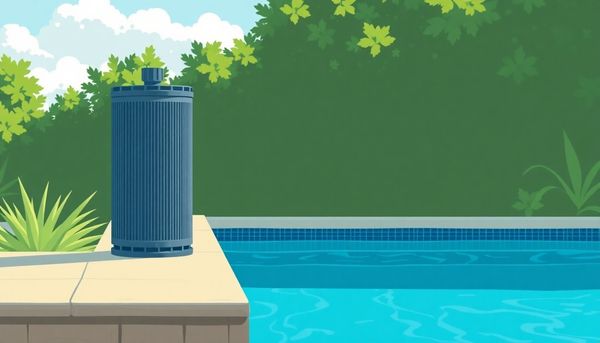
Selecting the perfect pool filter is like finding the right pair of shoes: it needs to fit your needs, style, and comfort level. When you dive into the realm of pool filters, you're faced with three main contenders: sand, cartridge, and diatomaceous earth (D.E.). Each has its own charm and quirks, suiting different pool personalities.
Consider sand filters if simplicity and durability are your priorities. They're straightforward, using sand to trap debris as water cycles through. Picture it like a natural beach filtration system—low maintenance and cost-effective. However, while they may not catch the tiniest particles, adding a dash of D.E. powder can boost their efficiency.
For those who appreciate efficiency without hefty upkeep, cartridge filters offer a happy medium. With pleated polyester capturing particles as small as 10 microns, they provide clearer water with minimal water waste. Maintenance requires occasional rinsing and a bit of elbow grease, but the payoff is crystal-clear swimming conditions.
D.E. filters, the meticulous housekeepers of the trio, catch the finest contaminants, polishing your water to a near-pristine state. Though they demand more attention and care—think of them as the luxury sports car of filters—their precision is unmatched. Regularly adding D.E. powder and ensuring proper disposal keeps them in top shape.
Ultimately, your choice depends on your pool's size, your willingness to invest time and effort, and your desire for water clarity. Once you've matched your pool's personality with the right filter, you'll be ready to enjoy swim time with fewer worries.
Understanding the array of pool filter types is akin to choosing the right tool for a job—each serves a unique purpose and excels in specific situations. Sand filters, for example, are classic workhorses, perfect for those who prioritize affordability and minimal upkeep. They're filled with #20 silica sand, capturing particles as small as 20 microns. Despite their simplicity, these filters require occasional backwashing, a straightforward process of reversing water flow to cleanse trapped debris. As a child, I remember watching my dad backwash our pool filter, marveling at how quickly the water cleared up.
For those seeking finer filtration without breaking the bank, cartridge filters step up to the plate. They employ pleated polyester cartridges that trap debris down to 10 microns. Maintenance involves a simple hose-down, sparing water and effort compared to sand filters. I once tried cleaning one myself, surprised by how manageable it was, even on a hot summer day.
Finally, for the meticulous pool owner, diatomaceous earth (D.E.) filters offer unmatched precision, filtering particles as tiny as 5 microns. These filters utilize a powder made from fossilized diatoms, providing crystal-clear water. However, they demand more attention, including regular manual cleaning and reapplication of the D.E. powder. Choosing among these depends on your budget, pool size, and willingness to roll up your sleeves—each filter offers a pathway to pristine water under the sun.
In the world of pool maintenance, the term "micron" emerges as an unsung hero. Understanding the significance of microns can transform how effectively your pool filter functions. Let's break it down: a micron is one-millionth of a meter, a measurement so minuscule that even a strand of human hair dwarfs it at about 50 microns. This scale is crucial because it determines what your pool filter can trap. While chlorine valiantly battles bacteria, it's your filter that physically removes these microscopic foes from your water.
Why does this matter? Well, if you aim for crystal-clear waters, knowing the micron rating of your filter is essential. For instance, sand filters capture particles around 20 microns, which works for everyday debris but may let finer contaminants slip through. If you’re particular about minuscule particles, a cartridge filter might appeal, catching down to 10 microns. For those seeking microscopic precision, Diatomaceous Earth (D.E.) filters could be your best ally, filtering down to 5 microns.
Choosing based on micron capacity influences more than just clarity; it affects maintenance frequency and, ultimately, your enjoyment of the pool. In my experience, investing in a filter that tackles smaller microns has been a game-changer. Not only did it keep our swimming area pristine, but it also required less frequent cleaning. So, when selecting your pool filter, consider microns—your aquatic oasis will thank you.
Selecting the right pool filter is crucial, but understanding the maintenance involved is equally important. Each filter type presents its unique cleaning routine, and knowing how much effort you're willing to invest can guide your decision. Let's explore what each filter demands in terms of upkeep, so you can choose one that fits your lifestyle.
Sand filters are the low-maintenance kings. If your schedule is packed, the ease of backwashing—a process where water is reversed through the filter to clean out trapped debris—might appeal to you. However, be prepared for regular replacement of the sand every five years or so, as the grains smooth out and lose their filtering edge. A little personal anecdote here: my neighbor once turned his pool into a murky pond by neglecting this simple task!
On the other hand, cartridge filters require a bit more hands-on attention. You'll need to remove the cartridge and hose it down periodically to ensure it remains free-flowing. A deep clean with a filter cleaner or a soak in a chemical solution is also advisable. While it might sound laborious, the reduced water waste compared to backwashing makes it worth considering. My cousin swears by this method for her environmentally conscious setup.
D.E. filters, while offering superior filtration, demand the most effort. After backwashing, fresh D.E. powder must be added, which requires precision. Annual dismantling for a thorough clean is a must, making them a choice for those who don’t mind a bit of elbow grease for crystal-clear water. It's a commitment, but one that pays off if you're willing to put in the work.
Ultimately, your choice hinges on the balance between desired water clarity and your willingness to roll up your sleeves. Each filter type has its merits and drawbacks in terms of maintenance, so consider what fits naturally into your routine.
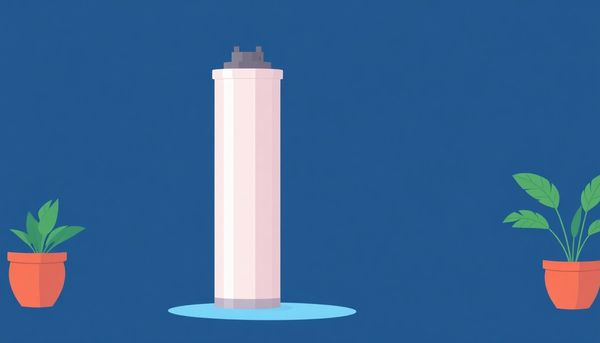
Understanding the various types of pool filters is like decoding a mystery that ensures pristine water for your summer oasis. Imagine lounging by the pool, confident that the water is as clear as a polished gemstone. To achieve this, you'll want to familiarize yourself with the three main filter types: sand, cartridge, and diatomaceous earth (D.E.). Each has its unique attributes and maintenance needs.
Sand filters, often the choice for those seeking low-cost, low-maintenance solutions, work with #20 silica sand to capture particles around 20 microns. They're great for large pools, as they won’t clog easily, but require regular backwashing to maintain flow. Alternatives like ZeoSand or filter glass can enhance their efficiency without frequent maintenance interruptions.
Cartridge filters, enclosed in a smaller tank with pleated polyester media, excel at trapping particles down to 10 microns. The simplicity of maintenance—removing the cartridge and hosing it down—makes them appealing for many pool owners. They are efficient and conserve water, although they demand occasional chemical cleaning for optimal performance.
For those who prioritize impeccable water clarity, D.E. filters offer superior filtration, capturing particles as small as 5 microns. Though they require more upkeep, including frequent backwashing and powder replenishment through the skimmer, their effectiveness is unmatched. Safety precautions, such as wearing a mask when handling D.E. powder, are essential to ensure both the pool’s and your health.
Understanding these filter types lets you make informed decisions, matching your pool's needs with your lifestyle, and ensuring the water remains a crystal-clear escape all season long.
Choosing the right pool filter can feel like a daunting task, especially when you're aiming for a balance between efficiency and ease of maintenance. Among the various options, sand filters offer a unique set of advantages that appeal to both pool owners with large setups and those mindful of ongoing upkeep.
To start, sand filters are renowned for their simplicity and durability. Often, they serve as the go-to choice for larger pools due to their robust design that handles higher volumes of water without frequent clogging. This reliability means less frequent maintenance compared to other filter types—a definite win if you prefer to spend more time swimming than maintaining your pool.
The magic behind a sand filter lies in its use of #20 silica sand. Even though it captures particles down to 20 microns, its efficiency can be surprisingly enhanced as trapped debris helps catch smaller particulates over time. This natural aid, however, requires periodic backwashing, an easy process signaled by a pressure gauge indicating when it's needed.
Moreover, innovations in sand filter media have improved their performance further. Options like ZeoSand and filter glass can replace standard silica, providing finer filtration. For example, ZeoSand's zeolite composition traps smaller contaminants, while filter glass, with its negative charge, captures positively charged particles effectively.
Reflecting on personal experience, a friend once switched to filter glass, noting a marked improvement in water clarity and reduced maintenance time. These enhancements, combined with their relatively low cost and straightforward maintenance, make sand filters a compelling choice for any pool enthusiast seeking efficiency without complexity.
Deciding between cartridge and diatomaceous earth (DE) filters often feels like choosing between convenience and performance. Each offers distinct advantages, making them suitable for different pool owners based on their preferences and pool usage.
Cartridge filters are favored for their simplicity. Picture a cylinder wrapped with pleated polyester that effectively traps particles as small as 10 microns. Maintenance is straightforward—remove the cartridge and spray it down with a garden hose. With a bit more elbow grease, you might occasionally soak it in a cleaning solution. My friend swears by hers due to its ease and minimal water waste, a cherished trait in our drought-prone region. If you have a medium-sized pool and value ease over intensive cleaning, a cartridge filter is likely your best ally.
On the other hand, DE filters are the thoroughbreds of pool filtration, capturing particles as small as 5 microns thanks to their fossilized algae medium. This makes them ideal for those obsessing over crystal-clear water. However, they demand a bit more care. Post-cleaning, you must add new DE powder, a task akin to mixing pancake batter in a skimmer basket. For larger pools or those with heavy debris, the DE filter shines, albeit with more maintenance effort. My neighbor religiously maintains his DE filter because, for him, the sparkling water is worth the extra time.
Ultimately, your choice hinges on balancing maintenance commitment against water clarity expectations.
Choosing the right filter media for your pool is like picking the perfect pair of shoes; it needs to fit your lifestyle and specific needs. Different types of filter media offer distinct advantages, making your choice a crucial one for maintaining a pristine swimming pool.
Sand filters remain a popular choice for their simplicity and low maintenance requirements. If your pool sees a lot of activity or if you own a large pool, sand filters efficiently manage high volumes of water without frequent clogs. Standard #20 silica sand captures particles as small as 20 microns. Imagine the rough texture of sandpaper; over time, this texture smooths out, reducing its efficacy. While backwashing helps maintain its performance, alternatives like ZeoSand or filter glass can enhance filtration. ZeoSand, with its crystal-like structure, traps finer particles and requires less frequent backwashing, while filter glass offers longevity and can capture particles down to 5 microns.
Cartridge filters provide a middle ground with ease of maintenance and the ability to trap particles as small as 10 microns. Their compact design makes them suitable for smaller pools, and cleaning simply involves hosing down the cartridge.
For those seeking superior filtration, D.E. filters capture particles as tiny as 5 microns, thanks to their fossilized diatoms. These filters demand more upkeep and careful handling of the D.E. powder but reward you with crystal-clear water.
Ultimately, your choice should balance your pool's size, your budget, and your willingness to engage in regular maintenance, ensuring sparkling clean water for every swim.

Choosing the right pool filter might seem like a daunting task, but understanding how to maximize filtration efficiency can transform your pool maintenance routine. Each filter type—sand, cartridge, or diatomaceous earth (D.E.)—offers unique benefits, yet all share a common goal: maintaining crystal-clear water by removing contaminants.
Sand filters, for example, use silica to trap particles as small as 20 microns. But for those looking to enhance efficiency, alternatives like ZeoSand or filter glass can be game-changers. ZeoSand's mineral composition naturally captures finer particles, while filter glass, made from recycled glass, can filter down to 5 microns and lasts significantly longer than traditional sand.
Cartridge filters, nestled within smaller tanks, excel at filtering debris as small as 10 microns. Cleaning them involves simply hosing off the pleated cartridges, saving water compared to backwashing. For those who prefer minimal hassle, these filters strike a great balance between efficiency and ease of maintenance.
D.E. filters, though more demanding, offer the pinnacle of filtration, capturing particles as tiny as 5 microns. They require regular addition of D.E. powder after cleaning, which can be a bit of a chore but ensures unmatched water clarity.
Regardless of the filter type, pairing it with the correct pool pump size ensures optimal performance. A misaligned pump-filter combination can lead to inefficiencies and a cloudy pool. Invest in quality, perform regular maintenance, and you’ll enjoy a sparkling oasis in your backyard for years to come.
Selecting the right pool filter is akin to picking the perfect pair of running shoes. Each type offers unique benefits tailored to different needs, ensuring your pool stays as inviting as a pristine lake. Sand filters, for instance, are the workhorses of the pool world, ideal for those who prefer simplicity and minimal upkeep. They handle large volumes of water with ease, making them a favorite for bigger pools. The secret lies in their use of #20 silica sand, which snags particles 20 microns or larger. Though efficient, regular backwashing is necessary to maintain peak performance.
On the other hand, cartridge filters step up the game with finer filtration, capturing debris as small as 10 microns. They are perfect for those who prioritize water clarity and have a bit more time to handle maintenance. Cleaning these involves simply spraying down the pleated cartridges with a hose. It’s a more hands-on process but rewards you with sparkling water that invites you for a dive any time of day.
Then, there’s the diatomaceous earth (D.E.) filter, the connoisseur’s choice. Capable of filtering particles down to 5 microns, it offers the clearest water possible. However, it demands a more significant commitment in terms of maintenance and cost. Adding D.E. powder after each cleaning session keeps the filter running smoothly, but care must be taken to dispose of the waste responsibly.
Ultimately, choosing your filter boils down to balancing cost, maintenance effort, and desired water clarity. Each option has its own rhythm, much like a favorite playlist, allowing you to harmonize your pool care routine with your lifestyle.
Considering the variety of options available, enhancing your pool's filtration system can seem like a daunting task. However, exploring alternatives to traditional filter media can offer significant improvements. Many pool owners, myself included, have found success in switching from standard silica sand to more advanced materials like ZeoSand, filter glass, or even filter balls.
ZeoSand, for instance, is derived from zeolite, a naturally occurring mineral. When I made the switch, I appreciated that it required only half the amount by weight compared to silica sand, and managed to capture finer particles, improving overall water clarity. The unique crystal structure of ZeoSand not only reduces the need for frequent backwashing but also extends the lifespan of the filter media.
Another intriguing option is filter glass, made from finely crushed recycled glass. Its smooth texture and negative charge attract contaminants like iron and manganese, filtering down to 5 microns. This was a game-changer for a friend who battled with persistent pool cloudiness. Plus, it lasts significantly longer than traditional sand, offering up to triple the lifespan.
Lastly, there are filter balls, a relatively new innovation that offers easy handling and superior performance. Made from a blend of polyester, polypropylene, and acrylic fibers, these balls are lightweight yet mighty, equating to 100 pounds of traditional sand with just 2.9 pounds. They also improve circulation and filtration without clogging, cutting down on maintenance time.
By exploring these alternatives, you can customize your pool filtration to suit your specific needs, improving efficiency and reducing maintenance, all while keeping your pool sparkling clean.
Finding the perfect pool filter isn’t just about choosing the right type or size; it's also about ensuring a steady, optimal water flow. Picture your pool as a living ecosystem, where every component must function harmoniously to maintain the water's crystalline clarity. An efficient water flow is crucial, as it determines how effectively your filter removes impurities and keeps your swimming environment safe and enjoyable.
Imagine the frustration of a sluggish pool system, where the water barely trickles through. Such a scenario often results from an undersized filter that can't keep up with the demand of a larger pump. The key to preventing this is to ensure your filter's flow rate aligns with your pool pump's capacity. Think of it as matching the heartbeat of your pool to its organs; each part must work in sync for the system to thrive.
Consider this personal anecdote: I once opted for a sand filter that seemed perfect for my budget but overlooked its compatibility with my pump. This oversight resulted in frequent backwashing and unsatisfactory filtration performance. It was a lesson learned the hard way—confirming that bigger doesn't always mean better if the components don't match.
Therefore, when selecting a filter, always factor in your pool's size and pump capacity. Ensuring that your system maintains optimal water flow not only enhances filtration efficiency but also prolongs the lifespan of your equipment. This harmony between pump and filter means more time enjoying your pool and less time worrying about maintenance.
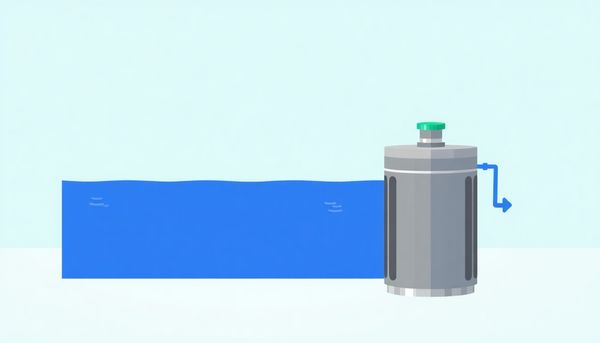
Selecting the right pool filter is only part of the equation; maintaining a healthy pool environment requires diligent attention to water chemistry. It’s like baking a cake—having the finest ingredients is great, but if you don’t measure them correctly, the end result won’t be tasty. Your pool filter may efficiently remove debris, but without balanced water chemistry, you risk turning your pool into a breeding ground for bacteria and algae.
Consider this: A friend of mine invested in a top-notch cartridge filter, only to find the water perpetually cloudy. The culprit? Imbalanced pH levels and insufficient sanitization. Chlorine, the hero in this aquatic tale, needs a stable environment to work its magic. Too high or low pH can render it less effective, allowing microscopic invaders to flourish. Aim for a pH level between 7.2 and 7.8 and keep an eye on alkalinity and calcium hardness to prevent corrosion or scaling that could damage your filtration system.
Moreover, if you’re opting for a sand filter, pay close attention to sanitizer levels, as it’s less efficient at catching the smallest particles. Regularly test and adjust your water chemistry to keep everything in harmony. With the right balance, your pool filter will not only perform optimally but will also extend its lifespan, saving you from frequent replacements and costly repairs.
Choosing the right filter for your pool might feel like deciphering an ancient map, with each type offering distinct paths to clear water. Imagine your pool as a living ecosystem, where balance is the key to clarity and health. Let’s explore each option with the curiosity of a treasure seeker.
Sand filters, a classic choice, are akin to a reliable workhorse. They might not capture the tiniest particles, but their low-maintenance nature and affordability make them a favorite for those with large pools or tight schedules. Think of them as the steady friend who’s always there when you need them, but perhaps not the one for handling intricate tasks. The simplicity of backwashing to clear debris suits those who prefer straightforward solutions.
Cartridge filters, on the other hand, are the artists of the filtration world. With their ability to capture smaller particles, they offer a clearer, more polished pool experience. These filters are ideal for those who appreciate a slightly more hands-on approach, as they require periodic removal and cleaning. Yet, their efficiency in both energy and water use makes them a smart choice for the environmentally conscious.
Lastly, D.E. filters could be considered the high-tech gurus. They deliver the finest filtration, catching particles as small as five microns. While they demand a bit more attention and care, including manual cleaning and precise D.E. powder reapplication, the reward is water that sparkles like a precious gem. Perfect for those who seek the pinnacle of pool clarity and don’t mind rolling up their sleeves.
Choosing a pool filter is like finding the right dance partner; it needs to match your style, rhythm, and commitment level. Consider your priorities and resources, and you’ll find the filter that keeps your aquatic oasis pristine and inviting.
Selecting the right pool filter is just the start; optimizing its efficiency is where the magic happens. Just like tuning a musical instrument, fine-tuning your pool filter ensures crystal-clear water, making every swim a delightful experience.
Firstly, consider your pool's size and usage patterns. A filter that's just right for a small backyard pool might struggle with the load of larger, heavily used pools. Start by matching the filter's capacity to your pool's volume and pump flow rate. A mismatch can lead to increased wear and tear or inefficient cleaning. It's a bit like trying to run a marathon in shoes that are two sizes too small—possible, but not comfortable or effective.
Routine maintenance is key. Regularly cleaning or replacing filter media is crucial to maintaining optimal performance. For instance, my friend Mike found his pool water turning murky because he neglected this simple upkeep. Once he started cleaning his cartridge filters every few weeks, the water clarity improved dramatically. Don’t forget to check the pressure gauge; increased pressure usually signals the need for a cleaning session or backwashing.
Adding a touch of technology can also enhance filtration efficiency. Consider integrating an automatic pool cleaner or a variable speed pump, which can work alongside your filter to keep the water pristine while conserving energy. Remember, a well-optimized filter not only extends its lifespan but also ensures your pool remains a refreshing oasis all season long.
A well-chosen pool filter is just the starting point; nurturing it ensures those refreshing dives stay crystal clear. Think of filter maintenance as a ritual, not a task, embracing it as part of your pool care routine.
One summer, my neighbor discovered the hard way what neglect can do. Leaves and debris swirled in her once-inviting pool, all because her sand filter hadn’t seen a backwash in months. Regular backwashing, especially after heavy usage or storms, prevents such clogs. For sand filters, remember to change the sand every five years, or opt for alternatives like ZeoSand, which offers improved filtration and less frequent maintenance.
Cartridge filters require a bit more hands-on attention. Removing and hosing them down monthly will keep them in peak form. A deeper clean with a filter cleaner or a soak in a diluted acid solution is necessary every few months. This was a game-changer for me, cutting down on the constant water cloudiness I used to face.
D.E. filters, with their meticulous particle-trapping ability, demand regular attention. After backwashing, replenish the D.E. powder through the skimmer for even coverage. And once a year, disassemble and give those grids a thorough clean.
Regardless of the type, keeping an eye on the pressure gauge can signal when your filter needs a little TLC. Regular maintenance not only extends the life of your filter but also keeps your pool an inviting oasis all season long.
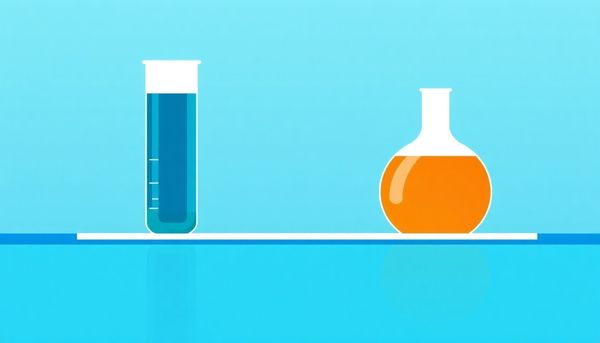
Ever tried to fix a car without ever changing its oil? It might run for a while, but eventually, things will go south. The same goes for your pool filter, which demands regular attention to keep your pool sparkling. To ensure longevity and efficiency, knowing the ins and outs of filter maintenance is crucial.
Start with understanding the unique requirements of your filter type. Sand filters, for instance, demand backwashing every few months when the pressure gauge indicates a rise. This simple process reverses water flow, cleaning out the accumulated debris. On the other hand, cartridge filters require more hands-on care. You’ll need to hose them down regularly and occasionally indulge them in a cleaning solution soak to maintain peak performance.
For the meticulous care of D.E. filters, you need to handle the D.E. powder with care. After each backwash, replenish with fresh powder via the skimmer to ensure an even coating across the grids. Remember, the city may have specific disposal guidelines for used D.E. powder, so check local regulations to avoid complications.
Maintenance isn’t just about cleaning. Regular inspections for leaks or pressure inconsistencies can save you from future headaches. A vigilant eye can spot worn O-rings or pressure issues before they become problematic. Consider it a pact with your pool—if you take care of the filter, it will, in turn, take care of your pool. By keeping up with maintenance, you ensure the longevity of your filter and the clarity of your pool water, making each swim as refreshing as the last.
Choosing the right pool filter often feels like navigating a maze of choices, but with a bit of clarity, it becomes a straightforward path. Sand filters, the budget-friendly option, are favored for their simplicity and ease of maintenance. They efficiently capture particles of 20 microns or larger, making them ideal for larger pools where clogging could be a frequent issue. My neighbor swears by her sand filter, appreciating its longevity despite the eventual need for backwashing and occasional sand replacement.
For those seeking enhanced filtration without breaking the bank, cartridge filters offer a compelling balance. They capture particles as small as 10 microns, are energy-efficient, and require less water during maintenance. Cleaning involves removing the cartridge for a quick rinse, a task easily manageable over a weekend. I remember a friend who loved how his cartridge filter kept his smaller pool crystal clear with minimal effort, except for the periodic deep clean with diluted muriatic acid.
Then there are diatomaceous earth (D.E.) filters, the choice for those unafraid of a little extra work to achieve pristine water quality. Capable of capturing particles as tiny as 5 microns, these filters require regular backwashing and D.E. powder replenishment. Despite their higher cost and maintenance demands, a colleague of mine found the superior clarity achieved with a D.E. filter was perfect for his family's entertainment-focused pool area.
Each filter type has its merits and demands, and understanding these nuances helps pool owners make informed decisions that align with their maintenance preferences and budget constraints.
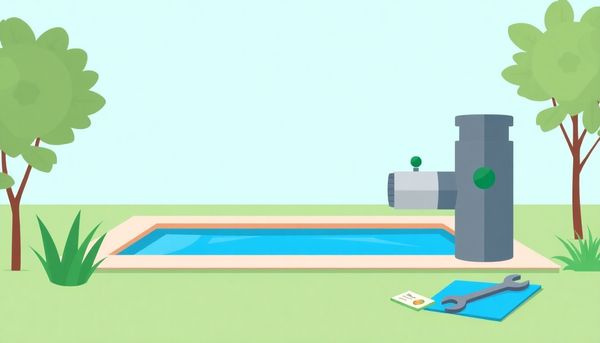
This article provided insights into maintaining your pool. Start your pool care journey today!
Want to become a pool maintenance expert? Our free Pool School course covers everything you need to know about pool care. From basic maintenance to advanced troubleshooting, you'll learn how to:
Join over 10,000 pool owners who have already transformed their pool care routine. Get started with our free Pool School course today!